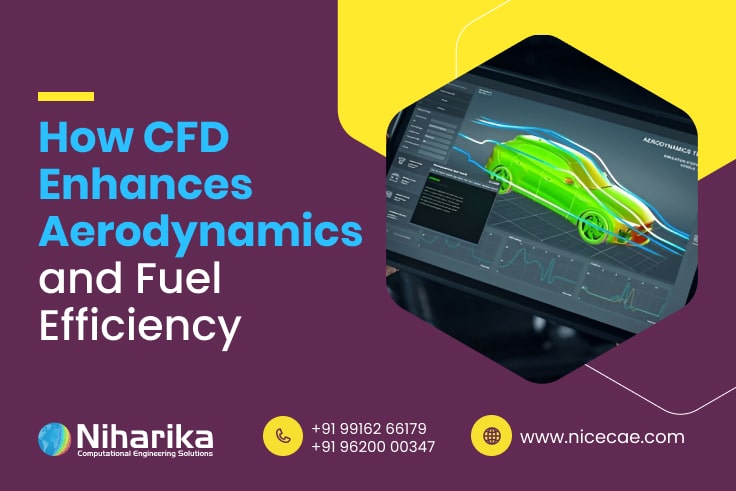Electronic gadgets have become commonplace and effortlessly incorporated into our daily lives in the current digital era. These gadgets, which range from smartphones and laptops to gaming consoles and servers, depend on a careful balance of power and efficiency to operate at their best. Managing the heat that electronics produce has become a crucial concern as they continue to develop and grow more powerful. CFD consulting services can help in this situation. We will look at how thermal analysis using CFD is transforming the look and feel of electrical products in this blog post.
The Heat Conundrum
Electronic gadgets are actually complex networks of linked electronic parts. These parts naturally produce heat as a result of their electrical activity as they function. While a little heat is natural and bearable, too much heat can cause a number of problems, such as:
Reduced Performance
Electronic components may throttle or slow down due to overheating, which will impact the overall performance of the device.
Dependability
The lifespan of electronic components can be shortened by prolonged exposure to high temperatures, which can result in premature breakdowns.
Safety Hazard
Extreme heat can, in some circumstances, result in electrical fires or other safety issues.
Thermal management is crucial for avoiding these problems and guaranteeing the best performance possible from electronic equipment. Simulations using CFD are useful in this situation.
How Thermal Analysis Uses CFD
In the field of fluid mechanics known as computational fluid dynamics (CFD), issues involving fluid flow and heat transport are solved and analysed using numerical techniques and algorithms. CFD models can precisely anticipate and visualise how heat is dispersed and controlled within a device when used for thermal analysis of electrical equipment. The following steps are often included in the process:
Creation of the Geometry
To enable numerical calculations, the geometry of the electrical device is formed into a mesh, which divides it into several cells.
Boundary Conditions
Boundary conditions are described, including airflow rates, material characteristics, and surface temperatures.
Simulation
The governing equations for fluid flow and heat transport inside the device are solved by the CFD analysis services. It forecasts fluid flow patterns, heat transfer rates, and temperature distributions.
Analysis and Optimisation
Engineers can locate areas of concern when temperatures are excessively high by analysing the results from the CFD simulation. The design can then be altered to improve thermal performance.
Thermal Analysis Using CFD: Challenges
Although CFD models are effective tools for thermal study, they have certain drawbacks:
Geometry Complexity
The proper representation of complicated geometries in CFD simulations of electronic devices can be computationally challenging.
Transient Analysis
It is crucial to comprehend how temperature fluctuates over time (transient analysis), but it uses a lot of processing power.
Material parameters
For accurate simulations, it is essential to precisely define material parameters, such as thermal conductivity and heat capacity.
Validating Results
A crucial stage in the process is comparing the precision of CFD simulations to actual measurements.
Applications of CFD in Electronics Thermal Analysis
• Aerodynamics, Aerothermodynamics
By giving insights into the complicated fluid and thermal behaviours that are encountered by aircraft and spacecraft at a range of speeds and altitudes, it helps to maximise their performance, safety, and efficiency.
• Reactive and Non-reactive Flows
CFD in thermal dynamics offers useful insights into fluid behaviour in both non-reactive and reactive flows, assisting engineers and researchers in optimising designs, forecasting performance, and comprehending the effects of numerous elements on fluid behaviour.
• Exhaust Flow Analysis
An excellent tool for exhaust flow study in automobile engineering is CFD in thermal dynamics. It helps in enhancing the performance of exhaust systems, lowering emissions, ensuring the longevity and safety of exhaust components, and optimising exhaust system designs.
• Turbo Machines
An excellent tool for exhaust flow study in automobile engineering is CFD in thermal dynamics. It helps in enhancing the performance of exhaust systems, lowering emissions, ensuring the longevity and safety of exhaust components, and optimising exhaust system designs.
• Pressure vessel thermal CFD analysis
A useful technique for the investigation of pressure vessels is CFD in thermal dynamics. It aids engineers in evaluating these vital thermal performance of the components, safety, and effectiveness in numerous industrial applications.
Final Thoughts
A game-changer in the realm of electronics design and production is the use of CFD for thermal analysis of electronic devices. It enables engineers to address heat management difficulties head-on, ensuring top performance, dependability, and safety. CFD simulations will become more and more important in keeping our gadgets cool and our data safe as electronic devices develop and become a bigger part of our lives. The electronics sector is poised to keep developing and expanding the realm of the possible, thanks to the power of CFD.


.jpg)
 (1).jpg)
 (1).jpg)
 (1).jpg)

.jpg)
(1).jpg)
(1).jpg)
.jpg)
.jpg)
.jpg)



.jpg)


.jpg)




.jpg)